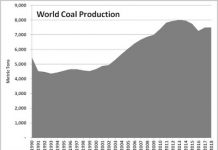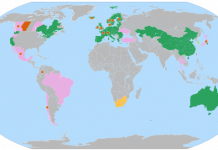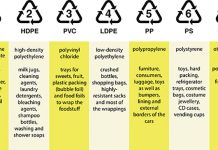Most Americans now agree that something needs to be done to reduce our greenhouse gas emissions. Hopefully most Americans now appreciate that this is not a small, but even more so, not a simple problem. I am a big believer that the playing field for our low carbon future should start level, and the market should be structured to allow our major power and energy companies a chance to lead the way, instead of simply dishing out punishment for our combined historical choices. Carrots and sticks work well together, but sticks alone are not going to solve our global carbon problem. I think it is also important to ensure that our carbon legislation does not result in a higher cost to consumers in middle America, just because the MidWest happens to have been historically coal fired, than the cost to those of us living on the coasts. Jim Rogers of Duke Energy puts this much more eloquently than I do. Duke Energy (NYSE:DUK), one of the largest power companies in the US, has been a long supporter of energy efficiency, and known for being forward looking when it comes to a low carbon future, smart metering, and advanced energy technologies, despite having a generation fleet that is 70% coal fired. Cleantech Blog is delighted to welcome Jim Rogers, CEO of Duke Energy, to give us his thoughts on the devil in the details from their perspective. It is heartening to see a major power company take on the carbon issue full force, and like Duke has done, push energy efficiency in a big way. – Neal Dikeman, Cleantechblog.com By Jim Rogers Chairman, President and CEO of Duke Energy As we debate our differences on how to address the challenge of global climate change, surely we can agree on the end-goal – a secure, sustainable and affordable supply of energy now, and for future generations. Most Americans also agree that we must act now – and begin building a bridge to an energy-efficient, low-carbon economy. As the third-largest coal consumer in the United States, and one of the largest greenhouse-gas emitters, Duke Energy has a responsibility to be part of the solution. That means looking at not only how climate change affects our business today, but also the implications for the future. We support federal legislation to address global climate change by putting a cap-and-trade system in place. The U.S. Senate is in the process of vetting a cap-and-trade bill introduced by Senators Lieberman and Warner in October. This bill is well-intended, contains some good points and appears to have bipartisan support. But on closer examination, questions arise. Who really stands to gain, and who stands to lose? What are the real costs to average Americans? You would expect the bridge to a low-carbon economy to have a cost, just as you might pay a toll to cross any bridge. But should some of us have to pay twice? With the Lieberman/Warner approach, that’s exactly what would happen. Lieberman/Warner proposes to auction a large number of emissions allowances to the highest bidder. In effect, an auction becomes a carbon tax, levied on consumers in the 25 states that depend on coal for electric power – primarily the Midwest, the Great Plains and the Southeast. Electric power customers in those regions would have to pay for the auctioned allowances up front, and then pay again later to upgrade power plants, or build new ones, as carbon-control technologies become available. A better approach is to allocate allowances at no cost to generators who emit greenhouse gases – and reduce the number of allowances over time, while new carbon-control technologies are being developed and put in place. Some say that an auction is the only way to take action to reduce emissions, but history tells us otherwise. Allowances were not auctioned under the 1990 Clean Air Act Amendments; nearly 97 percent of them were allocated at no cost. Since then, new technologies to reduce sulfur dioxide and nitrogen oxide emissions have been developed and implemented. Those environmental controls have reduced emissions by more than 40 percent since 1990, and they continue to decrease, without dramatic rate hikes. In fact, the nation’s average electric rates have declined. In contrast, some estimates put the Lieberman/Warner bill’s cost to the average family at more than $1,000 per year, while emissions traders would stand to profit greatly from a volatile market for carbon allowances. According to Bloomberg, the Lieberman/Warner bill would create a potential $300 billion annual carbon-trading market by 2020. So the question comes down to this – are we interested in protecting consumers or enriching emissions traders? Customers who live in the Midwest, the Great Plains and the Southeast did not choose to get a large portion of their electricity from coal – it was a matter of economics, geography and geology. They should not be punished for decisions made decades ago, in good faith, using the best and lowest-cost technology of the time, with regulatory approval – and long before anyone knew about the impact of carbon emissions on climate change. And before we dismiss coal as a viable energy source for the future, consider this: The U.S. is sitting on more than 250 years of coal reserves, more than any other nation in the world. This rich natural resource has untapped potential for ensuring our country’s energy security. The challenge is primarily technological – to find smarter and cleaner ways to use it, such as carbon capture and storage. Until those technologies are available, we must continue to use our existing coal resources and protect the interests of consumers who rely on coal. The goal for carbon legislation should not be to punish utilities for building coal plants to keep the lights on in the past. It should be to create the incentives to put new clean technologies in place for the future – not just clean coal, but also nuclear and renewable energy, natural gas and the “fifth fuel” – energy efficiency. Under the Lieberman/Warner approach, electric power customers in half of our states will carry a disproportionate share of the burden. We need to pass climate legislation that is fair to all consumers and protects the economic interests of all states and regions. Our climate is at stake, and so is our economy. By allocating most allowances, following the precedent set by the successful Clean Air Act, we believe both can be protected. Jim Rogers is the CEO of Duke Energy, writing as a guest columnist on Cleantech Blog. AltEnergyStocks.com wishes to thank Jim Rogers and Neil Dikeman at Cleantech Blog for letting us republish this piece.






The cap-and-auction vs. cap-and-trade discussion is showing the cracks in the foundation of that misbegotten entity: USCAP.
Auctions are as effective a method as ever invented for discovering a clearing price.
As market pros, you guys prove the point every day.
Discovering the clearing price of carbon and then raising it high enough to change behavior is the whole point of the exercise.
Limiting the auction to emitters, i.e. no financial intermediaries, eliminates the need for trading and with that elimination the potential for gaming and slippage
(fees, commissions, spreads etc.).
For some reason I picture CEO’s and above in an open outcry pit.
Be good for ’em to work up a sweat.
Love the blog,
Happy holidays.